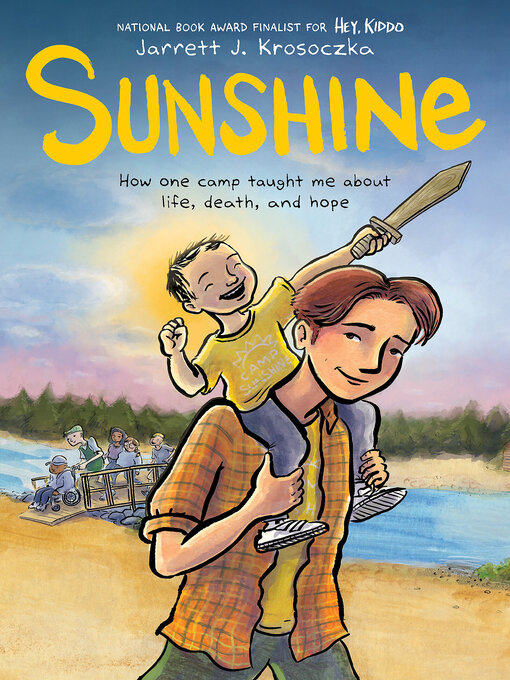The extraordinary — and extraordinarily powerful — follow-up to Hey, Kiddo.
When Jarrett J. Krosoczka was in high school, he was part of a program that sent students to be counselors at a camp for seriously ill kids and their families. Going into it, Jarrett was worried: Wouldn't it be depressing, to be around kids facing such a serious struggle? Wouldn't it be grim?
But instead of the shadow of death, Jarrett found something else at Camp Sunshine: the hope and determination that gets people through the most troubled of times. Not only was he subject to some of the usual rituals that come with being a camp counselor (wilderness challenges, spooky campfire stories, an extremely stinky mascot costume), but he also got a chance to meet some extraordinary kids facing extraordinary circumstances. He learned about the captivity of illness, for sure... but he also learned about the freedom a safe space can bring.
Now, in his follow-up to the National Book Award finalist Hey, Kiddo, Jarrett brings readers back to Camp Sunshine so we can meet the campers and fellow counselors who changed the course of his life.

